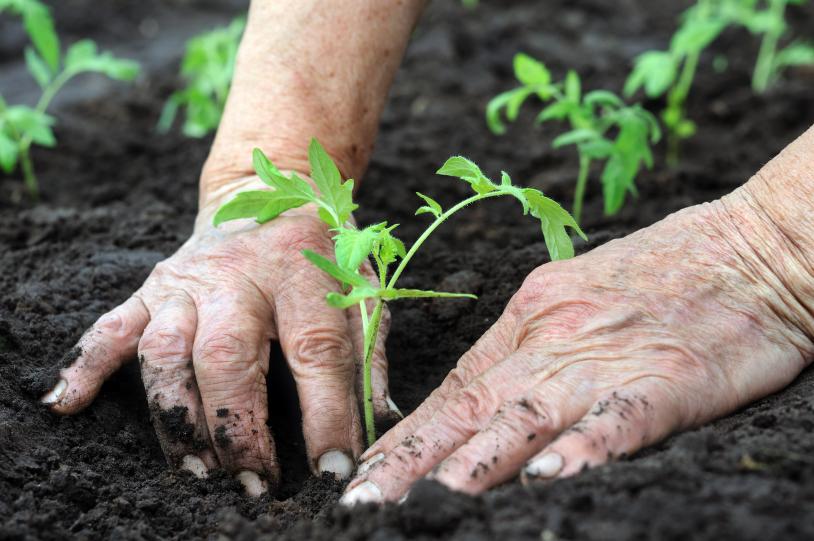Introduce
Transplanting and direct seeding are the two main methods of growing plants. Transplanting involves starting seeds indoors or in a controlled environment and then moving the seedlings to their final growing location. On the other hand, direct seeding sows seeds directly into the ground and allows them to grow to maturity. The decision between transplanting and direct seeding should not be made lightly as it can affect the overall health and productivity of the plant.
Transplantation: Pros and Cons
When planting, consider that many vegetable plants have poor germination ability, and cannot be directly sown or grow slowly, requiring a long growing season. For example: tomatoes, peppers eggplants, etc. Usually, transplantation will have better results
Advantages of transplantation
Transplanting involves starting plants indoors or in a greenhouse and then moving them to their final outdoor location. This method allows you to control the early growth stages of your plants and get a head start on the growing season. Ability to protect seedlings from external factors such as pests, diseases, and adverse weather conditions. This is particularly helpful in northern regions with shorter growing seasons, maximizing the time it takes to harvest crops. Additionally, transplants allow for better spacing and organization of plants, resulting in a more aesthetically pleasing garden layout.
Disadvantages of transplantation
However, transplantation also comes with its own set of challenges. Starting seeds indoors requires more time and effort, and there is a risk of transplant shock and root damage when moving seedlings.

Direct Seeding: Advantages and Disadvantages
Generally speaking, most root crops such as carrots, radishes, etc. do best when sown directly in the garden.
Others, such as beans and flowers, which have high germination rates and fast growth rates, are also easier to plant directly in the garden.
Advantages of Direct Seeding
Direct seeding is a cost-effective method because it does not require the purchase of seedlings, pots, and other transplanting materials. Plants grown through direct seeding also tend to adapt more naturally to their environment. Additionally, some plants develop strong root systems from the start to avoid damage to their roots during the transplanting process.
Disadvantages of Direct Seeding
Direct sowing, on the other hand, may result in slower initial growth because the seeds take longer to germinate and take root. Plants grown by direct seeding are more susceptible to pests and environmental conditions and have less control over germination success. More attention to detail in spacing and timing is needed to ensure optimal growth.
Direct Seeding or Transplanting
Some plants can be grown either way – they usually have good germination rates and are quick to grow and establish, but are also able to be transplanted into the garden if desired. Some of the more common vegetables in this category include cucumbers and squash.
Whether transplanted or directly seeded, a plant’s roots need air, water, and food to thrive. So it is beneficial to add some organic fertilizer to some of the soil around and underneath the plants to encourage the plants to better adapt to the environment and develop.
It is recommended to use organic humic acid or fulvic acid fertilizers to promote root development, regulate soil conditions, and promote plant absorption. Kill three birds with one stone!

Conclusion
When deciding between transplanting or direct seeding, consider the plant’s specific needs and growing conditions to choose the method that will suit your crop. If you are new to gardening or have limited space, live streaming may be the easier option. However, if you are growing delicate plants or crops that require a longer growing season, transplanting can give your plants a better chance of success.
FAQs
Which plants are suitable for direct seeding?
For large seeds with a hard outer coating, sow directly. For example: corn, beans, sunflowers, peas, pumpkins, watermelons, cantaloupe, winter melon, and melon seeds are all ideal choices for direct sowing.
Are the plants suitable for transplantation?
Crops with smaller seeds are suitable for transplanting, such as petunia, celery, eggplant, kale, broccoli, kohlrabi, leeks, onions, peppers, scallions, Brussels sprouts, and tomatoes.
What should you pay attention to when transplanting?
When transplanting, the new site should have enough space to accommodate the roots and good drainage. Choosing fresh, nutrient-rich soil is crucial. Transplanting is prohibited during flowering or when the plant is stressed from lack of water or light. Also, avoid damaging the roots when removing the plant from its original pot.
How to prevent shock during transplantation?
Water the soil thoroughly before transplanting and protect it from strong winds. Try to plant on cloudy days or at night so the plants can recover from the intense sunlight. Provide a small amount of organic fertilizer to the roots to promote rapid recovery and development of the plant.
What are the conditions under which plants can be transplanted?
Most plants are best transplanted between late fall and early spring, when they are dormant and the roots have a chance to re-establish themselves in the ground and grow again. Additionally, flower plants are transplanted before they bloom.
